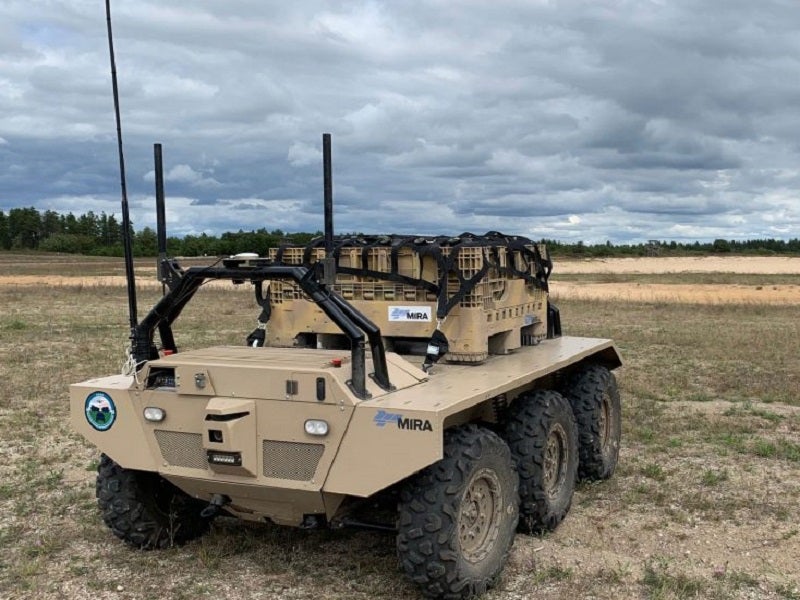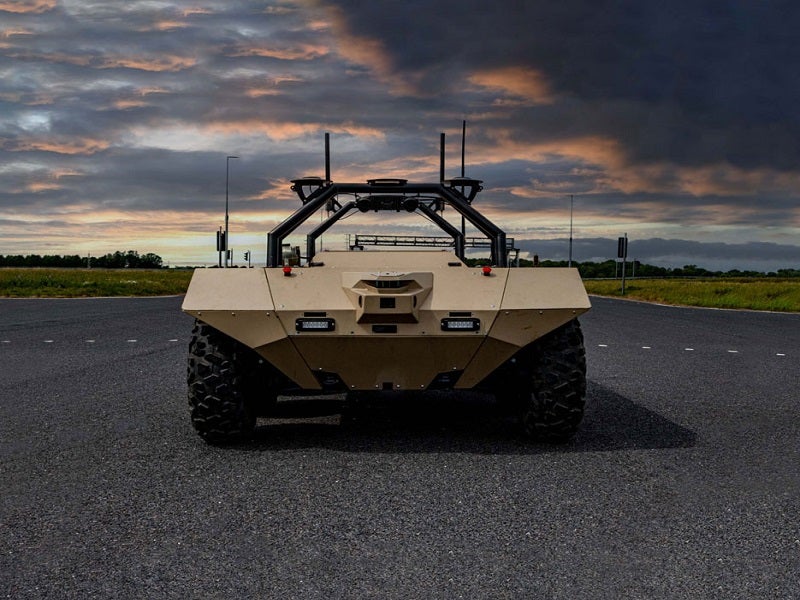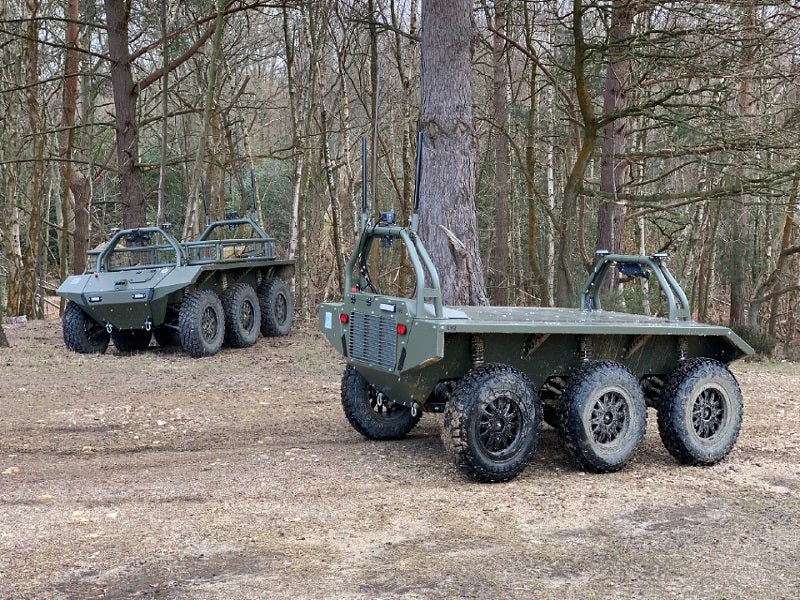Viking is a 6×6 multirole unmanned ground vehicle (UGV) equipped with artificial intelligence (AI), a low-bandwidth communication system, and command and control systems.
The UGV is manufactured by Horiba Mira, an automotive engineering, research, and test services provider based in the UK.
The vehicle can perform multiple missions, such as last-mile logistics support, soldier support, security and surveillance, intelligence, surveillance, target acquisition, and reconnaissance (ISTAR), combat or direct fire support, and improvised explosive device (IED) detection.
Viking UGV development details
Horiba Mira received a contract worth £700,000 ($930,279) from the UK Government as part of a cross-governmental collaboration for the second phase of the Autonomous Last Mile Resupply (ALMRS) competition in July 2018. The competition aims to develop and demonstrate the use of autonomous systems to deliver supplies to forward positions in the field.
The UK Ministry of Defence (MoD) signed a £2.3m ($2.82m) contract with Horiba-Mira to deliver three UGVs to the British Army, in March 2020. The contract was awarded as part of the Joint Tactical Autonomous Resupply and Replenishment (JTARR) risk reduction project in support of the Project Theseus that aims to explore the deployment of autonomous platforms to enhance the flow and efficiency of battlefield logistics.
The Defence Science and Technology Laboratory (DSTL) will conduct trials with the British Army on behalf of the UK MoD.
DSTL announced an investment of £1.5m ($2.08m) and signed a contract with Horiba Mira to develop a chemical, biological, radiological, and nuclear (CBRN)-resistant vehicle in August 2021. The funding will also support the development of autonomy algorithms for CBRN sensor outputs that allow the UGV to detect potential threats.
Horiba Mira and DSTL will perform minor modifications on one of the three Viking UGVs, allowing it to carry the CBRN sensor pallet.
Viking UGV design and features
The vehicle is based on a generic vehicle architecture (GVA) that allows for the carriage of multiple electronic payloads on the platform. The UGV has a low acoustic signature when compared to larger manned platforms.
Its advanced autonomy and adaptability to user-defined routes enable the UGV to deliver the mission equipment and supplies across complex terrains. The hand-held terminal allows the users to send commands to the UGV during logistics resupply missions.
Horiba Mira demonstrated the manned-unmanned teaming (MUM-T) capability of the Viking UGV as part of the British Army Warfighting Experiment 2019 (AWE19), a live trial of emerging military technologies and tools.
Navigation and control
The Viking UGV supports command-on-the-move and can be controlled by dismounted troops and military vehicles. Its low-bandwidth communication system enables the operators to supervise and control the UGV. The vehicle can function autonomously even in global positioning system (GPS)-denied areas with the use of AI.
Its navigation system allows for semi-autonomous operation without much human intervention, while the semi-autonomous surveillance capability of the UGV enables the automatic detection and geolocation of objects of interest.
The UGV uses the existing modular autonomous control equipment (MACE) that support functions such as remote control, teleoperation, strategic route generation, autonomous route following, obstacle detection, obstacle avoidance, and tactical rerouting.
Viking UGV propulsion
The UGV is fitted with a diesel parallel hybrid powertrain. The battery-powered mode ensures a silent driving range of 20km, while the maximum range of the vehicle is 200km.
The hybrid drive helps charge the battery, avoiding the need for external charging. The high-voltage system aboard the vehicle provides mains power to the payloads or supports off-board functions.
Suspension and mobility
The Viking uses a four-wheel steering mechanism, which imparts greater manoeuvrability over difficult terrains and paved surfaces.
The six-wheel independent suspension of the vehicle ensures a smooth ride and enables the UGV to carry sensitive payloads, or heavy loads weighing up to 750kg during casualty evacuation missions. It also helps the vehicle to attain higher off-road speeds and a maximum speed of 50km/h on road.






